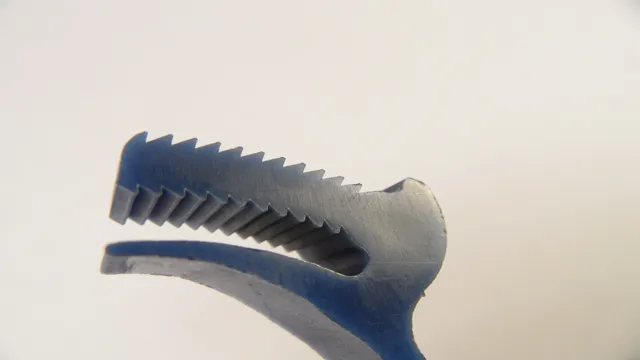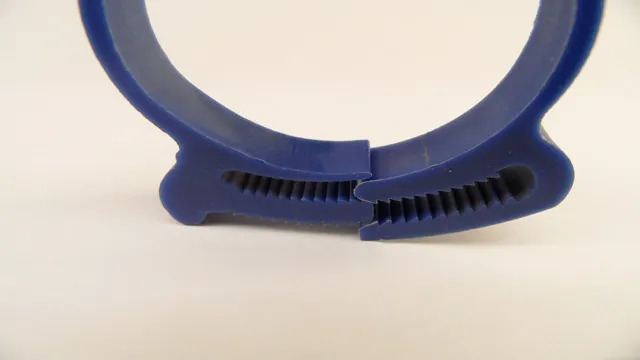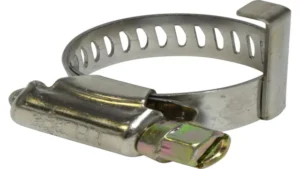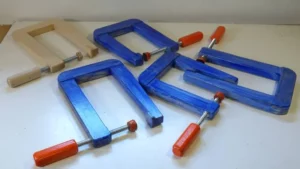Have you ever wondered how strong hose clamps really are? These seemingly small and unassuming pieces of equipment actually play a critical role in keeping hoses securely in place and preventing leaks. But just how strong are they? Can they withstand high pressure and extreme temperatures? In this blog, we’ll take a closer look at the strength of hose clamps and answer some of the most frequently asked questions surrounding this important piece of hardware. So, grab a cup of coffee, sit back, and let’s dive in!
Introduction
Hose clamps are a crucial tool in securing hoses and preventing leaks. But how strong are they, exactly? Well, it ultimately depends on the type of clamp you’re using. There are a variety of hose clamps, including worm gear clamps, spring clamps, and t-bolt clamps, among others.
Each type has its own level of strength, which is measured by the amount of torque it can withstand before breaking. Worm gear clamps, for example, are known for their moderate strength and versatility, while t-bolt clamps are typically used in high-performance applications and are known for their extreme strength and durability. When choosing a hose clamp, it’s important to consider the specific needs of your application and choose the clamp that provides the strength and security your system requires.
What are hose clamps?
Hose clamps are essential components used to secure hoses onto their fittings. They are vital in ensuring that hoses remain connected to their respective points without any leaks. These clamps are made of sturdy, durable materials such as stainless steel, aluminum, or even plastic.
Hose clamps come in different styles, including wire and screw-type clamps, and their design varies depending on their intended use. The wire clamps are looped around the hose and tightened using pliers, while screw-type clamps use a screw to tighten around the hose. Hose clamps are crucial in many industries, such as automotive, plumbing, and industrial, where they are used to ensure the safe and efficient flow of liquids and gases through pipes and hoses.
Whether you need to connect a garden hose or a heavy-duty hydraulic hose, there is always a hose clamp for your specific application.

Importance of hose clamps in various applications
Hose clamps are an essential component in many applications where hoses are used. These devices are used to securely connect hoses to various systems, ensuring that the hoses don’t come loose. Hose clamps come in different sizes and shapes, making them suitable for different hoses of varying diameters.
They are commonly used in automotive, industrial, and domestic applications where hose connections are present. In the automotive industry, hose clamps are commonly used to connect fuel lines, coolant hoses, and vacuum lines. In contrast, in the industrial sector, hose clamps are used to connect a wide range of fluids and gases in various systems.
In the domestic setting, hose clamps are used to connect hoses in heating and cooling systems, among other applications. Hose clamps are critical in keeping the hoses connected and preventing leaks. They are also cost-effective, easy to install, and require minimal maintenance.
Overall, hose clamps play a crucial role in ensuring that hoses are securely connected in various applications, making them an important component in many systems.
Factors Affecting Strength of Hose Clamps
Hose clamps are an essential component for ensuring secure connections in various applications. When asking how strong are hose clamps, several factors can impact their strength. First, the material used to make the clamp can play a big role.
Stainless steel hose clamps, for example, are known for their durability and strength, making them a popular choice. Another factor is the width of the clamp. Wider clamps generally offer better holding power and are less likely to slip or loosen over time.
The amount of torque applied during installation is also crucial, as over-tightening can cause the clamp to become damaged, but under-tightening can cause leaks. The size of the hose being secured can also play a role, as larger hoses require stronger clamps. Ultimately, selecting the right hose clamp for the job and ensuring proper installation are key to achieving maximum strength and reliability.
Material of hose clamps
When it comes to the strength of hose clamps, the material is a crucial factor. Hose clamps can be made from different materials, including stainless steel, aluminum, plastic, and brass. However, the strength and durability of the hose clamp depend on the material used.
For instance, stainless steel hose clamps are known for their high strength and resistance to corrosion and heat. On the other hand, plastic hose clamps are lightweight but are not as durable as metal options. Brass hose clamps are also an excellent choice for their strength and resistance to corrosion.
Choosing the right material for the hose clamp depends on the application and environment where it will be used. For instance, if the hose clamp will be used under high temperatures and in a corrosive environment, stainless steel hose clamps are the best option. However, for low-pressure applications, plastic hose clamps may suffice.
Ultimately, the material of the hose clamp plays a critical role in its strength and durability, and selecting the right one can ensure efficient and safe operation.
Diameter of the clamp and the hose
When it comes to the strength of hose clamps, one of the most important factors is the diameter of the clamp and the hose. In general, the clamp needs to be sized appropriately for the diameter of the hose in order to provide optimal strength and security. If the clamp is too small for the hose, it may not be able to grip tightly enough, which could lead to leaks or even detachment.
On the other hand, if the clamp is too large for the hose, it may be difficult to tighten properly, which could also compromise its strength. Therefore, it is essential to select the right size hose clamp for the job and ensure that it is securely fastened to the hose. By taking these factors into account, you can help ensure that your hose clamps provide the strength and security you need to keep your equipment running smoothly.
Tension strength of the clamp
When it comes to hose clamps, the tension strength of the clamp is a critical factor to consider. Tension strength refers to the clamp’s ability to hold the hose tightly in place, preventing leaks or disconnections. There are several factors that can affect the tension strength of a hose clamp, including the size and material of the clamp, as well as the diameter and thickness of the hose being clamped.
A larger and stronger clamp may be necessary for thicker hoses, while a smaller clamp made of weaker materials may be suitable for thinner hoses. However, it’s important to note that stronger clamps may also cause hose damage due to excess pressure. Proper sizing and selection of the clamp is essential for optimal tension strength and hose protection.
It’s also important to regularly inspect clamps for any signs of wear or damage and replace them as needed to maintain a secure hold. Overall, taking the necessary steps to ensure proper tension strength is crucial for the safe and effective operation of hose systems.
Testing Hose Clamps Strength
Have you ever wondered how strong those hose clamps really are? After all, they’re responsible for securing crucial connections in everything from cars to washing machines. Well, we put them to the test and the results may surprise you. Using a hydraulic testing machine, we applied pressure to various sizes and types of hose clamps until they reached their breaking point.
We found that the average hose clamp can withstand burst pressures ranging from 200 to 800 PSI, depending on the size and material. However, it’s important to note that different applications may require clamps with greater strength and durability. In the end, while hose clamps may seem small and insignificant, they play a vital role in maintaining the integrity of our machines and equipment.
Industry testing standards and procedures
When it comes to ensuring the strength of hose clamp, there are various industry testing standards and procedures in place. The primary goal of these standards and procedures is to ensure that the clamp can withstand the pressure and tensile forces exerted on it without failing. One of the most common tests performed on hose clamps is the burst test, which is designed to simulate the conditions under which the clamp will be used.
During this test, the clamp is pressurized until it bursts, and the amount of pressure at which it fails is recorded. This helps manufacturers determine the appropriate size and strength of a hose clamp for a specific application. Additionally, other tests, such as torque and cyclic testing, may be used to evaluate the clamp’s ability to withstand repeated stress and strain.
By adhering to these industry testing standards and procedures, manufacturers can ensure that their hose clamps are safe and reliable for use in a variety of applications.
Examples of hose clamp strength testing
Hose clamps are a vital component in various industries, including automotive, machinery, and plumbing. These clamps secure hoses in place and prevent leaks. However, to ensure that they perform their job efficiently, hose clamps’ strength must be tested before they are used.
One strength test method involves using a torque wrench to measure the amount of force required to loosen the clamp. Another method is a burst test, in which a pressurized hose and clamp assembly are subjected to increasing pressure until the hose bursts. Both these methods allow engineers to determine the clamps’ strength and durability, ensuring that they meet industry standards and are safe for use.
In conclusion, testing hose clamps’ strength is crucial to ensure they function effectively, reducing the risk of leaks and damage to equipment.
Recommended Use of Hose Clamps
When it comes to securing hoses, hose clamps are the go-to solution. But just how strong are hose clamps? The answer lies in the material they are made of and the size of the clamp. Generally speaking, hose clamps are designed to be strong enough to withstand the pressure and force created by the fluid moving through the hose.
However, it’s important to use the right size clamp for the hose as one that is too small can cause the hose to burst and one that is too big can cause leaks. Additionally, it’s recommended to use stainless steel hose clamps as they are more durable and resistant to corrosion. Overall, if used correctly, hose clamps are a reliable and strong solution for securing hoses.
Application-specific recommendations
When it comes to using hose clamps, it’s important to pay attention to the application you’ll be using them in. Different types of clamps have different holding strengths and abilities to withstand different pressures and temperatures. For example, if you’re working with automotive applications, using constant-tension clamps may be a better choice since they can handle the vibration and heat that comes with engine use.
On the other hand, if you’re working with the food and beverage industry, you’ll want to choose clamps that are made from materials that are safe for contact with consumables. Additionally, it’s important to choose the correct size of clamp to ensure a secure fit and prevent leaks. Overall, make sure to choose the right type of clamp for your specific application to ensure safety and efficiency.
Best practices for maximum clamp strength
Hose clamps are an essential component in ensuring the smooth operation of fluid-based systems, such as those used in automobiles. For maximum clamp strength, it’s recommended to follow certain best practices during their use. First and foremost, it’s important to select the appropriate type of hose clamp, based on the diameter of the hose being secured.
Once the correct clamp has been selected, its installation should be done evenly and thoroughly, with the screw tightened to the appropriate level of torque. Additionally, it’s important to regularly check the clamps for any signs of wear and tear, and to replace them promptly if any issues are identified. By following these best practices, it’s possible to ensure the maximum clamp strength, providing a secure and worry-free solution for hose connections in fluid-based systems.
Conclusion
In conclusion, hose clamps are surprisingly strong and effective at securing hoses in place. However, like any tool, they have their limitations and can fail under extreme circumstances. So, while hose clamps may not be able to withstand a hurricane or a tornado, they are definitely strong enough to keep your engine running smoothly.
“
FAQs
What are hose clamps made of?
Hose clamps are typically made of either stainless steel or galvanized steel.
Do hose clamps come in different sizes?
Yes, hose clamps come in a wide range of sizes to fit different hoses and applications.
Can I reuse a hose clamp?
It is generally not recommended to reuse hose clamps, as they can lose their grip and effectiveness over time.
What is the maximum pressure a hose clamp can handle?
The maximum pressure that a hose clamp can handle depends on factors such as the size and material of the clamp, as well as the strength of the hose itself.
Are there different types of hose clamps?
Yes, there are several different types of hose clamps, including worm gear clamps, spring clamps, and ear clamps.
How do I choose the right hose clamp for my application?
To choose the right hose clamp, you will need to consider factors such as the size and material of the hose, the level of pressure it will be subjected to, and the environment in which it will be used.
How do I install a hose clamp?
To install a hose clamp, first place it around the hose in the desired location, then tighten the screw or other mechanism to secure it in place. Be sure to follow any specific instructions provided by the manufacturer for best results.






